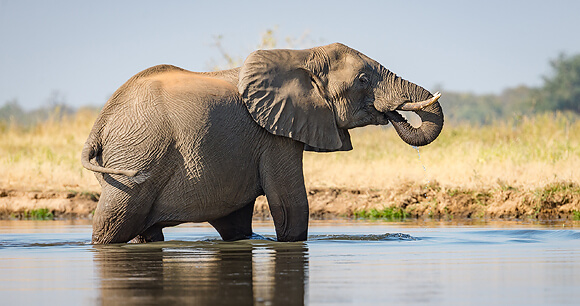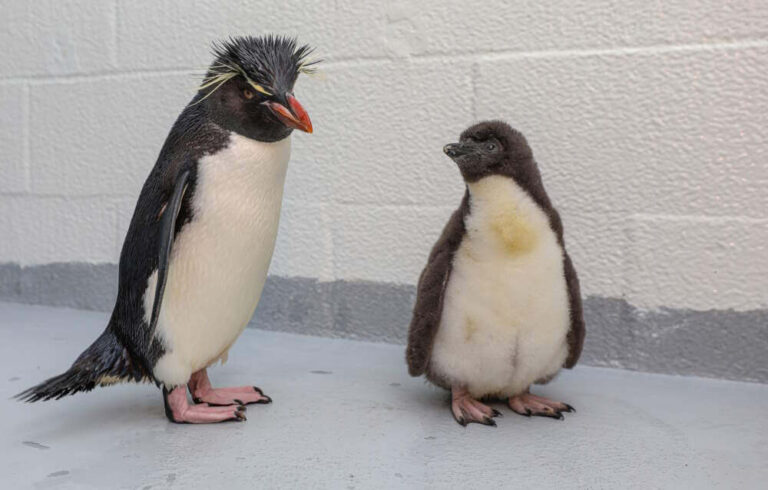Kudu: Facts, Habitat, Behavior, and Conservation Insights
The Kudu is a striking species of antelope known for its impressive horns and graceful presence. Found primarily in Africa, kudus are divided into two species: the Lesser Kudu (Tragelaphus imberbis) and the Greater Kudu (Tragelaphus strepsiceros). This article will explore the Kudu’s scientific classification, physical characteristics, habitat, behavior, diet, reproduction, predators, conservation status, and its relationship with humans.
Contents
Scientific Classification
- Kingdom: Animalia
- Phylum: Chordata
- Class: Mammalia
- Order: Artiodactyla
- Family: Bovidae
- Subfamily: Bovinae
- Genus: Tragelaphus
- Species: T. strepsiceros (Greater Kudu), T. imberbis (Lesser Kudu)
Both species belong to the genus Tragelaphus, which includes spiral-horned antelopes. The Kudu’s closest relatives are other antelopes, such as the bushbuck and nyala.
Physical Characteristics

Greater Kudu:
The Greater Kudu is one of the tallest antelope species, standing at around 4 to 5 feet (1.2 to 1.5 meters) at the shoulder. Males are significantly larger than females, with males weighing between 420 and 600 pounds (190 to 270 kg), while females range from 260 to 460 pounds (120 to 210 kg).
- Coloration: Both males and females have a brown-grey coat with distinctive white stripes running vertically along their bodies. Males tend to be darker.
- Horns: Male Greater Kudus are known for their spectacular, spiral-shaped horns, which can grow up to 6 feet (1.8 meters) in length. Females do not have horns.
Lesser Kudu:
Lesser Kudus are more diminutive, standing at the shoulder at 3.3 to 4 feet (1 to 1.2 meters). Males weigh around 200 to 240 pounds (90 to 110 kg), while females are lighter at 110 to 160 pounds (50 to 70 kg).
- Coloration: They have a reddish-brown coat, which turns grey as males age, along with the same striking vertical white stripes.
- Horns: Lesser Kudu males have shorter, twisted horns, reaching up to 3.5 feet (1 meter).
Habitat and Distribution
Greater Kudu:
Greater Kudus are widespread in eastern and southern Africa, as well as in South Africa, Kenya, Tanzania, Zimbabwe, and Angola. They thrive in wooded savannas, dry forests, and areas with thick bushes and scrubland, where they can hide from predators.
Lesser Kudu:
Lesser Kudus are primarily located in the Horn of Africa and East Africa, inhabiting areas of semi-arid scrubland and dry thickets. Their range includes countries like Ethiopia, Kenya, Somalia, and Tanzania.
Behavior and Social Structure

Kudus are generally shy and elusive animals. They prefer staying in the shadows of dense bush and avoid open grasslands. Kudus are crepuscular (most active at dawn and dusk), which helps them prevent daytime predators and conserve energy in the heat of the African sun.
Social Structure:
- Males: Adult male kudus are often solitary or form small bachelor groups.
- Females: Females and their young tend to form herds of 6 to 10 individuals, though groups can occasionally be more prominent, especially in favorable environments.
Communication:
Kudus communicate with vocalizations such as grunts, barks, and soft calls. They also use body language, such as postures and tail flicking, to signal danger to other herd members.
Diet
Kudus are herbivores and primarily browsers, feeding on various leaves, grasses, shoots, and fruits. They are known to consume acacia leaves, shrubs, and herbs. During dry seasons, they rely on more fibrous plant matter and may eat succulents to gain moisture.
Their diet varies by season:
- Wet season: Fresh leaves and grasses
- Dry season: Dry, tough leaves and twigs
Kudus can go for long periods without direct water sources, obtaining moisture from the plants they eat.
Reproduction and Life Cycle
Kudus have a seasonal breeding cycle, which is influenced by the region they inhabit. The mating season typically occurs between April and June, with calves born after a gestation period of 7 to 8 months.
Mating Behavior:
- Males engage in intense horn wrestling during the mating season to establish dominance and win over females.
- Females usually give birth to one calf at a time, hiding the newborn in thick cover for the first few weeks to protect it from predators.
Calves begin to join the mother and the herd after about 2 to 3 weeks. They reach sexual maturity at around 2 years for females and slightly later for males.
Predators and Threats
Kudus face numerous threats in the wild, primarily from large carnivores such as lions, leopards, hyenas, and African wild dogs. Humans also pose a significant threat through hunting and habitat destruction.
To avoid predators, kudus rely on their excellent hearing and ability to stay motionless when danger is near. Their large ears give them an advantage in detecting distant threats, and their camouflaging coat helps them blend into their environment.
Conservation Status
- Greater Kudu: Listed as Least Concern by the IUCN, Greater Kudus has a stable population due to its adaptability and wide distribution. However, local populations are sometimes threatened by habitat loss and hunting.
- Lesser Kudu: Lesser Kudus are also classified as Least Concern. However, they face more pressure from habitat fragmentation and hunting, especially in regions where their range overlaps with human settlements.
Conservation efforts, including protected areas and anti-poaching regulations, help maintain their populations.
Evolutionary History
Kudus belong to the Tragelaphini tribe, a spiral-horned antelope that evolved around 5 to 23 million years ago during the Miocene epoch. Their ancestors likely developed in forest ecosystems, which explains their preference for woodland habitats. Over time, kudus adapted to various environments, from dry savannas to semi-arid scrublands.
The evolutionary advantage of their spiral horns remains a topic of study, but the horns likely developed as a defensive tool and a display for mating rituals.
Relationship with Humans
Kudus have held a place in African culture for centuries. Their impressive horns are often used for ceremonial purposes by various African tribes. Additionally, kudus are featured in African art and folklore.
In some regions, kudus are hunted for their meat and horns, though conservation measures have been implemented to ensure sustainable hunting practices. Ecotourism has also highlighted kudus as a prime attraction for wildlife enthusiasts.
Interesting Facts About Kudus
- The spiral shape of kudu horns makes them one of the most sought-after trophies among hunters.
- Kudus can leap as high as 2.5 meters (8 feet) when threatened, allowing them to escape predators.
- The Greater Kudu is depicted on South Africa’s national park logo, symbolizing the country’s rich wildlife.
- Kudus can go without drinking water for long periods, absorbing moisture from the plants they consume.
- Despite their size, kudus are incredibly agile and capable of moving swiftly through dense vegetation.
Conclusion
The Kudu is a remarkable species of antelope, celebrated for its beauty and resilience in the African wilderness. With a rich evolutionary history and a vital role in its ecosystem, the Kudu continues to be a symbol of Africa’s diverse and unique wildlife. Conservation efforts are essential to ensure that future generations can witness these magnificent animals in their natural habitats.
- Golden Retriever Pros and Cons: What Every Pet Parent Should Know - 15 September 2025
- Cane Corso Dog Breed: Health, Care, and Lifespan - 14 September 2025
- Catahoula Leopard Dogs: Description, Temperament, Lifespan, & Facts - 21 July 2025







